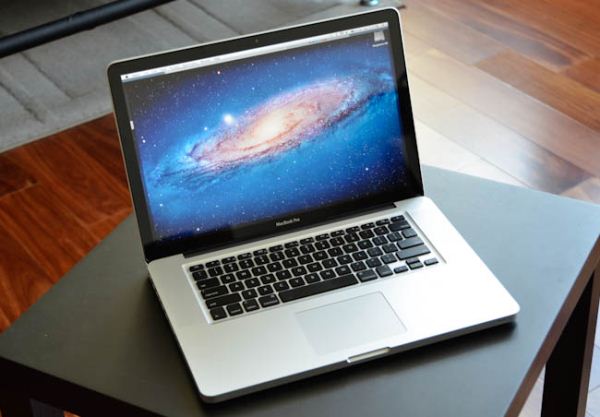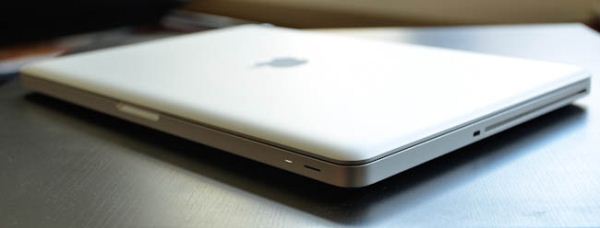The 2012 MacBook Pro Review
by Vivek Gowri on July 18, 2012 2:00 PM EST- Posted in
- Mac
- Apple
- MacBook Pro
- Laptops
- Notebooks
With most of the attention from Apple's hardware refresh event centered around iOS 6 and the new Retina MacBook Pro, the updated 2012 edition of the regular MacBook Pro has flown a little bit under the radar. Basically, it’s just an Ivy Bridge-infused version of the venerable unibody MacBook Pro chassis that we’ve known and loved for the last few years. The details don’t bring any particularly earth-shattering revelations, with 13” retaining the dual-core processor and integrated graphics, while the 15” makes the switch from AMD to Nvidia’s new Kepler-based GT 650M dedicated graphics. Along with Ivy Bridge, the 2012 MBP line gets HD 4000 graphics and USB 3.0 across the board, plus a free update to Mountain Lion when it releases later this summer. Naturally, it doesn’t generate the same kind of excitement that the all-new, all-awesome Retina MacBook Pro does. But is a less headline-worthy computer necessarily a worse one?
It’s pretty difficult to find things to write about the 2012 MacBook Pro hardware. You can essentially sum it up in one paragraph, or even one sentence if you try hard enough. The 2012 MBP looks exactly like the 2011 MBP, which looked exactly like the 2010 MBP, which looked exactly like the post-April 2009 MBP. It’s likely to be the last iteration of the original unibody MBP, giving this body style a 4.5 year run as one of the most instantly recognizable notebook computers on the market. I’m not going to go too far in depth with analyzing the design, because we’ve gone over it a few times over the years (here, here, here, here, here, and here. Oh and here too, just for good measure.)
It’s a solid notebook, that much is certain. From an SKU standpoint, Apple has kept things relatively straightforward, with a high end and a low end for both the 13” and 15” models. Starting at $1199, the MBP13 comes with a 2.5GHz Core i5-3210M, 4GB DDR3, and a 500GB HDD, while the higher end SKU bumps that to a 2.9GHz i5-3520M, 8GB DDR3, a 750GB HDD, and a $1499 pricetag. Other than the updated processor/integrated graphics and the addition of USB 3.0, the 13” is identical to the previous model that we covered in depth last year.
The 15” is a bit more interesting. The base $1799 SKU comes with a quad-core i7-3615QM (2.3GHz) and a 512MB Nvidia GeForce GT 650M dGPU, but makes do with a paltry 4GB of memory and a 500GB hard drive. The standard memory and storage configuration in a nearly-$2000 notebook is pretty unacceptable. This being Apple, upgrade pricing is still a hair away from being highway robbery, but at least the matte WSXGA+ screen upgrade costs a reasonable $100. Thankfully, unlike the rMBP and MacBook Air, you can always opt to buy RAM and storage upgrades on your own.
| 2012 MacBook Pro Lineup Comparison | |||||
| 15-inch Mid 2012 MacBook Pro | MacBook Pro with Retina Display | ||||
| Dimensions | 0.95 H x 14.35 W x 9.82" D | 0.71 H x 14.13 W x 9.73" D | |||
| Weight | 5.6 lbs (2.54 kg) | 4.46 lbs (2.02 kg) | |||
| CPU | Core i7-3615QM | Core i7-3720QM | Core i7-3615QM | ||
| L3 Cache | 6MB | 6MB | 6MB | ||
| Base CPU Clock | 2.3GHz | 2.6GHz | 2.3GHz | ||
| Max CPU Turbo | 3.3GHz | 3.6GHz | 3.3GHz | ||
| GPU | Intel HD 4000 + NVIDIA GeForce GT 650M | ||||
| GPU Memory | 512MB GDDR5 | 1GB GDDR5 | |||
| System Memory | 4GB DDR3-1600 | 8GB DDR3-1600 | 8GB DDR3L-1600 | ||
| Primary Storage | 500GB 5400RPM HDD | 750GB 5400RPM HDD | 256GB SSD | ||
| Optical Drive | Y | Y | N | ||
| Display Size | 15.4-inches | ||||
| Display Resolution | 1440 x 900 | 2880 x 1800 | |||
| Thunderbolt Ports | 1 | 2 | |||
| USB Ports | 2 x USB 3.0 | ||||
| Other Ports | 1 x Firewire 800, 1 x Audio Line in, 1 x Audio Line out, SDXC reader, Kensington Lock slot | SDXC reader, HDMI out, headphone out | |||
| Battery Capacity | 77.5 Wh | 95 Wh | |||
| Price | $1799 | $2199 | $2199 | ||
The unit we’re looking at here is the high-end 15” SKU, with a 2.6GHz i7-3720QM and a 1GB version of the GT 650M, plus 8GB memory and a 750GB HDD. It rings up at $2199, which interestingly is the same as the base rMBP (i7-3615QM/8GB/256GB SSD/1GB GT 650M). I’m mostly certain that it’s not the configuration to get - you’re better served by getting a base 2.3GHz 15”, adding the $100 high-res screen, and grabbing a 256GB SSD (~$250) and an 8GB RAM upgrade (~$50) separately from Newegg or Amazon. Boom. You spend roughly the same $400, depending on your SSD choice (I would go Samsung SSD 830), and end up with a system with a better screen that’s faster in most day to day situations. Unless you have a really specific need for the extra 512MB vRAM or 300MHz clock speed increase, I’d recommend against it.












132 Comments
View All Comments
dillettante - Wednesday, July 18, 2012 - link
The superdrive can be replaced with more internal storage. I use a SSD for a fast system drive and supplement that with a large mechanical HDD for data storage.J
chemist1 - Wednesday, July 18, 2012 - link
Agreed, for many that might be the most significant advantage of the older form factor. Also, you would need the older form factor if you wanted a dual-SSD RAID configuration for better performance.Bonzauker - Wednesday, July 18, 2012 - link
Exactly the reason why I stay away from the retina, at least at the moment. I put one 256 GB as main drive and the 750GB replacing the DVD. For my job, a notebook with only 256GB is useless.GotThumbs - Wednesday, July 18, 2012 - link
I choose to read this additional Apple review since it was written by a different reviewer, but feel it provides little value over just posting the spec comparison sheet directly from Apples website. This is simply a comparison between Apples past iterations of its own past parts bins. How much time was spent on this anyway?It would have been more informative if it had included other vendors similarly spec'd systems in the performance. While they won't have resolutions comparable to the Retina screen....Apples hardware is made up of many PC components available in the market place. Of course this excludes Apples proprietary designed reiterations of PC components (SSD).
I think the only point that really needs to be made ...is that if your an Apple user...here is yet another version of the old case with overdue upgrades in the internals. Non-Apple users need not bother.
I used to like to read Anandtech because It would provide an opportunity to learn about new technology and provided comparable performance information between components and systems in a clean and unbiased manner.
From now on...maybe it would be best if any Apple product review begins with..This review sponsored by Apple.
I'll still continue to read Anandtech, but know that any Apple review is just an advertisement/endorsement and thus read it with limited expectations of an unbiased comparison whats currently available in the marketplace.
At least this reviewer provided readers with information on an option for savings by passing over Apples overpriced upgrades and go thought a vendor for the parts at a price savings. I'm sure Apple reps were not happy, but it helps provide a small sense of reader centric writing instead of pleasing Apple.
$2,200 for a laptop...when there are PC alternatives available for hundreds less....yet no mention or comparison of those systems. If readers are only browsing, email and FB'ing...is this really worth the money? Only if your a tech-fashonista.
Sad.
Sunburn74 - Wednesday, July 18, 2012 - link
Well said. Pretty much a review for people who have already decided they want to buy a mac and nothing else.Sunburn74 - Wednesday, July 18, 2012 - link
In addition, in this day and age, to sell any machine costing over $1000 without a SSD is an absolute travesty.nevertell - Wednesday, July 18, 2012 - link
Anand has stated before that there is little to no cross shopping between apple and pc laptops.It is difficult to review different hardware with different OS's. Whilst many components may seem to be the same, apple has been known before to slip their own secret sauce into the hardware to be able to do things that just wouldn't be possible with the standard PC hardware, like the scaling hardware in the rMBP.
Freakie - Thursday, July 19, 2012 - link
Scaling hardware? And I haven't really seem much secret sauce in Apple's hardware. I see lots of lazy sauce, and people confusing design flares with engineering prowess.pmhparis - Thursday, July 19, 2012 - link
So, in your opinion Apple didn't innovate with the rMBP+OSX scaling Where can i find it then? Not on any PC+Windows nor on any PC+Linux.You clearly refuse to see that its the whole package that makes the rMBPs scaling a class above everything else out today. Too much emotional investment in windows like so many others. At least it makes it easy to see that your complains are biased.
Super56K - Friday, July 20, 2012 - link
I think it's more emotional investment in the hatred of Apple as a whole.